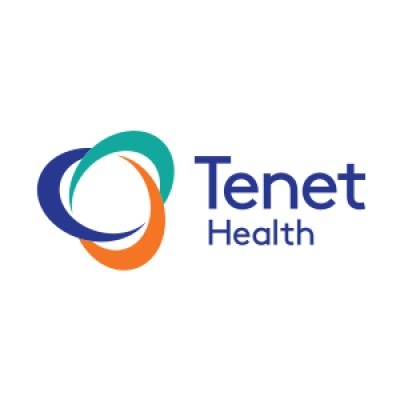The Surge and Stabilization of Healthcare M&A in Q3:2024
October 12, 2024, 10:06 am

Location: United States, Texas, Farmers Branch
Employees: 10001+
Founded date: 1969
Orlando Health Ventures
Location: United States, Florida, Orlando
Employees: 10001+
Founded date: 1918
The healthcare landscape is shifting. The third quarter of 2024 saw a notable uptick in merger and acquisition (M&A) activity within the hospital sector, while the broader healthcare market displayed signs of stabilization. This dual narrative reflects the complex dynamics at play in an industry grappling with financial pressures and strategic realignments.
In Q3:2024, hospital M&A activity surged, with 21 transactions announced. This marked a 24% increase from the previous quarter, where only 17 deals were recorded. However, this surge comes with a caveat. Compared to Q3:2023, when 24 deals were announced, the current figures represent a 12% decline. It’s a tale of two quarters—growth in the short term, but a step back in the long run.
The financial stakes are high. Announced spending in the hospital sector reached $4.1 billion in Q3:2024, more than double the $2 billion reported in Q2:2024. This increase signals a renewed interest in acquisitions, particularly among larger health systems looking to streamline operations or exit non-core markets. The largest deal of the quarter was Tenet Healthcare Corporation's $910 million sale of its majority stake in Brookwood Baptist Health to Orlando Health. This transaction underscores a trend of divestment among major players, as they recalibrate their portfolios.
The ongoing bankruptcy case of Steward Health Care also influenced the M&A landscape. Five of Steward's hospitals changed hands in Q3:2024, highlighting the ripple effects of financial distress in the sector. Buyers like Pafford Health Systems and AHS South LLC seized opportunities, acquiring facilities at a time when many health systems are reevaluating their assets.
Beyond hospitals, the broader healthcare M&A scene remained relatively stable. A total of 498 deals were announced in Q3:2024, nearly matching the 499 transactions from the previous quarter. However, this figure represents a 4% decline from the 520 deals recorded in Q3:2023. The stability in numbers belies the underlying pressures that continue to shape the market.
The physician medical groups and other services sectors drove much of the activity, with 112 and 140 deals, respectively. Demand for healthcare real estate, particularly outpatient facilities, has remained robust. Yet, not all sectors fared well. Behavioral health care and home health experienced significant declines, with M&A activity dropping by 28% and 40%, respectively. These declines reflect ongoing financial pressures that have left many providers struggling to maintain profitability.
Interestingly, the health technology sector showed resilience. M&A activity in this area saw a slight uptick, driven primarily by pharmaceutical deals, which increased by 36%. The eHealth sector also experienced growth, albeit modest, with a 5% increase in activity. This suggests that while some areas of healthcare are contracting, others are finding new avenues for growth.
Despite the overall stabilization, the total deal value in Q3:2024 was approximately $44 billion, down nearly 8% from the $47.8 billion reported in Q2:2024. However, this figure still represents a 6% increase compared to the $41.5 billion disclosed in Q3:2023. The largest deal in this quarter was the $8.9 billion acquisition of R1 RCM, a revenue cycle management company. This acquisition highlights the ongoing interest in companies that can enhance operational efficiency and improve the financial performance of healthcare providers.
As we look ahead, the healthcare M&A landscape is likely to remain active, particularly in the lower- and middle-market segments. Private equity firms and larger health systems are expected to continue their pursuit of strategic acquisitions. The need for consolidation in the face of rising costs and regulatory pressures will drive this activity.
In summary, the third quarter of 2024 paints a complex picture of the healthcare M&A landscape. While hospital transactions surged, the broader market stabilized amidst ongoing challenges. The interplay of divestments, strategic acquisitions, and sector-specific pressures will continue to shape the future of healthcare M&A. As health systems navigate these turbulent waters, the focus will remain on balancing portfolios, enhancing efficiencies, and ultimately delivering better care to patients. The healthcare industry is a living organism, constantly adapting and evolving. In this environment, agility will be key to survival and success.
In Q3:2024, hospital M&A activity surged, with 21 transactions announced. This marked a 24% increase from the previous quarter, where only 17 deals were recorded. However, this surge comes with a caveat. Compared to Q3:2023, when 24 deals were announced, the current figures represent a 12% decline. It’s a tale of two quarters—growth in the short term, but a step back in the long run.
The financial stakes are high. Announced spending in the hospital sector reached $4.1 billion in Q3:2024, more than double the $2 billion reported in Q2:2024. This increase signals a renewed interest in acquisitions, particularly among larger health systems looking to streamline operations or exit non-core markets. The largest deal of the quarter was Tenet Healthcare Corporation's $910 million sale of its majority stake in Brookwood Baptist Health to Orlando Health. This transaction underscores a trend of divestment among major players, as they recalibrate their portfolios.
The ongoing bankruptcy case of Steward Health Care also influenced the M&A landscape. Five of Steward's hospitals changed hands in Q3:2024, highlighting the ripple effects of financial distress in the sector. Buyers like Pafford Health Systems and AHS South LLC seized opportunities, acquiring facilities at a time when many health systems are reevaluating their assets.
Beyond hospitals, the broader healthcare M&A scene remained relatively stable. A total of 498 deals were announced in Q3:2024, nearly matching the 499 transactions from the previous quarter. However, this figure represents a 4% decline from the 520 deals recorded in Q3:2023. The stability in numbers belies the underlying pressures that continue to shape the market.
The physician medical groups and other services sectors drove much of the activity, with 112 and 140 deals, respectively. Demand for healthcare real estate, particularly outpatient facilities, has remained robust. Yet, not all sectors fared well. Behavioral health care and home health experienced significant declines, with M&A activity dropping by 28% and 40%, respectively. These declines reflect ongoing financial pressures that have left many providers struggling to maintain profitability.
Interestingly, the health technology sector showed resilience. M&A activity in this area saw a slight uptick, driven primarily by pharmaceutical deals, which increased by 36%. The eHealth sector also experienced growth, albeit modest, with a 5% increase in activity. This suggests that while some areas of healthcare are contracting, others are finding new avenues for growth.
Despite the overall stabilization, the total deal value in Q3:2024 was approximately $44 billion, down nearly 8% from the $47.8 billion reported in Q2:2024. However, this figure still represents a 6% increase compared to the $41.5 billion disclosed in Q3:2023. The largest deal in this quarter was the $8.9 billion acquisition of R1 RCM, a revenue cycle management company. This acquisition highlights the ongoing interest in companies that can enhance operational efficiency and improve the financial performance of healthcare providers.
As we look ahead, the healthcare M&A landscape is likely to remain active, particularly in the lower- and middle-market segments. Private equity firms and larger health systems are expected to continue their pursuit of strategic acquisitions. The need for consolidation in the face of rising costs and regulatory pressures will drive this activity.
In summary, the third quarter of 2024 paints a complex picture of the healthcare M&A landscape. While hospital transactions surged, the broader market stabilized amidst ongoing challenges. The interplay of divestments, strategic acquisitions, and sector-specific pressures will continue to shape the future of healthcare M&A. As health systems navigate these turbulent waters, the focus will remain on balancing portfolios, enhancing efficiencies, and ultimately delivering better care to patients. The healthcare industry is a living organism, constantly adapting and evolving. In this environment, agility will be key to survival and success.
